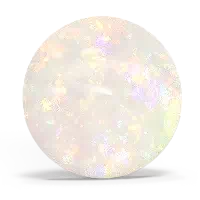

The gemstone is the star in these elegant Lab Emerald solitaire pendants. The birthstone of May, an emerald ring symbolizes the eternally returning spring. The velvety green color of emerald is a perfect match for spring and summer fashions. This birthstone of October has a luminosity and glow that makes an opal the treasure that it really is. The rainbow of colors on a neutral white background makes an opal ring a perfect match for any outfit.